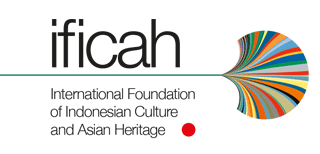Sword knife „takit“
| Object | Sword knife, „takit“, „rinadrug“ |
| Culture | South Formosa, Paiwan (Rukai, Puyuma) |
| Time | 19th century (?) |
| Dimensions | Length 59 cm |
| Material | Wood, steel, red lacquer, black lacquer, rattan, shell |
This object is a sword knife of a Paiwan group on South Formosa. The knife shows several snakes on the sheath and heads grouped in between. Mura calls for head hunting in order to raise the status of the ancestors in the hereafter and to be able to generate new life from the supplied life energy. The handle is decorated with numerous metal elements which can be addressed as stylised faces or heads. The design goes back directly to the frontal standing ruler or warrior figure, which can already be found on weapons of the Chinese Bronze Age (Dian culture, 400 B.C. to 200 B.C.).
The Paiwan, which are divided into a number of smaller ethnic groups, were, like the Atayal in the north, pushed into the higher-lying interior, especially from the 17th century onwards, by subsequent Chinese invaders over the centuries. Their settlement area today extends from the Damumu Mountains in the Taiwanese central mountains in the north to the southern tip of the island, and east of the mountains to the coast of Taitung County. In the 17th century, the Dutch colonialists referred to the area around the Fort Zeelandia (Tainan), which they built between 1624 and 1634, as “Tayowan” or “Tayovan” in reference to the ethnic name of the powerful Paiwan tribe. This name originally referred only to the city of Tainan, but was later extended to the entire island and phonetically imitated in Chinese as “Taiwan”. The Chinese characters for “Taiwan” mean “Terrace Bay”, which indicates that irrigation was already intensive at that time. Most Paiwan live in the high altitude regions of southern Taiwan.
The name Paiwan is said to derive from a myth. According to this myth, the Paiwan originally lived in a sacred area called Paiwan in the Dawu Mountains and then migrated south, the name was then applied to the emigrants. According to other sources, pai wan can simply be translated as “human”. The Paiwan number almost 100,000 people and make up almost one fifth of the indigenous population of Formosa. Taking advantage of the inaccessible geography, they have been able to defend themselves quite efficiently against external aggressors and have never really been captured.
Supplementing Literature Back to room view





